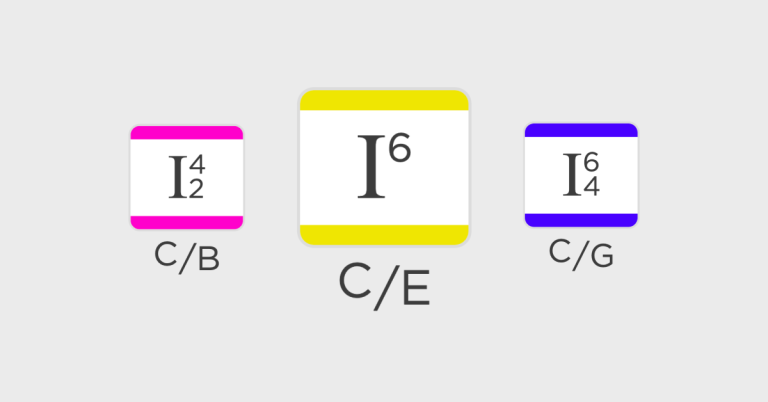
Writing a catchy hook is closer to an art than a science. Sure, there are some guiding principles that popular artists use to grab their listener’s attention and create memorable songs. But as you drill down and study artists across a wide range of genres, you’ll find that each group follows its own conventions.
So then, what is a hook in a song, and how do songwriters create chart-topping hits?
Here at Hooktheory, we’ve been building tools to answer that question for years!
The TheoryTab web app makes it easy to search for great songs, study their melodic hooks, and understand how they interlock with the chord progression to stick in the listener’s mind.
Our community has built up a database of over 50,000 songs that’s free to explore and learn from. The software combines music theory charts with user-friendly piano rolls and YouTube embeds so musicians of all skill levels can engage.
In this article, we’ll define what we mean by a song hook, share some common knowledge about the different varieties that exist, and provide real-world examples to back up our claims.
What is a hook in a song?
Song hooks are a feature of popular music designed to stay with the listener long after they finish listening. Even during the song, hooks are the main idea a composer, songwriter, or singer uses to “reel the audience back in” like a fish.
It’s worth pointing out that song hooks are often attached to a singer’s vocal line. When a song gets stuck in someone’s head, people have called those melodies “earworms” for over a century. And, of course, all of this happens through the medium of sound waves.
Hooks can exist almost anywhere in a song, including the intro, verse, or chorus. They’re usually composed of a catchy rhythm, melodic phrase, and some lyrics. If the words are memorable enough and fit the vocal melody, listeners will find themselves humming the tune later on.
People have a harder time singing background instrumental hooks, but they still exist. These include guitar riffs, bass lines, and other tonal instruments.
Let’s take a journey through music history and listen to examples of each hook category. This will help you to combine basic music theory with an intuition of how these things work.
Core features of a good hook
Almost every strong hook features a simple melodic phrase that’s repeated at least twice. If the song has lyrics, they can be just as important as the notes themselves.
The hook’s position relative to the entire song is easily overlooked, but it also plays a crucial role in how we, as the audience, experience it.
For example, a verse might not have a hook, but it builds anticipation of the main idea in the chorus. That great idea might kick off the song during the intro. We’ll share examples of both!
Examples of melodic hooks
Not every melodic idea is a hook. In fact, the majority of songs are made up of forgettable melodies. It’s also important to note that there are decades of catchy melodies with no lyrical content. Popular classical and jazz music is full of melodic hooks with no lyrics.
Learn more: Explore the intricacies of jazz music in our in-depth guide on jazz chord progressions.
Some of the most universal examples can be found in popular TV shows because they transcend our loyalty to a particular genre or style.
Game of Thrones theme melody
The main theme from Game of Thrones, composed by Ramin Djawadi, is instantly recognizable for anyone who’s watched the show. This instrumental hook is written in 6/8 meter and plays a bit with musical symbolism. It starts at the highest note, drops down by a fifth interval, and then ascends back up “to the throne” of the top position in a repeating four-note pattern.
At first glance, the melody seems to recur eight times, but look closely at the chord progression in the embedded TheoryTab above. Notice how the underlying chord moves from C minor to C major and then back to C minor again.
Djawadi refreshes the ear and keeps the audience hooked by toggling between the parallel minor and major keys. When he moves to a new key, he repeats the motif again from a new chord and begins introducing variations with call and response.
The Simpsons theme melody
If you grew up watching television, you can probably sing the Simpson’s theme by heart. It’s a great example of how a melodic hook can be incredibly complex yet remain in people’s memory for years.
The repeating rhythmic hook combines with stepwise ascending and descending motion in the hook’s melody. The punctuated, four-note, single-tone motif at the end of that staircase shape offers the necessary balance to the prior hill-shaped chromatic figure.
The theme’s composer, Danny Elfman, is notorious for these kinds of mischievous and catchy tunes. He’s fortunate to have visual themes to assist him, whereas other songwriters have to rely on lyrics to “paint a picture.” It’s easier to create a hook when there’s a story attached.
Examples of rhythmic hooks
A rhythm hook is often played on tonal instruments and incorporated into melodies. It does not refer to an idea played on the drums but to the rhythmic portion of a phrase.
Here’s the litmus test: If you can tap out a song idea on a table and someone recognizes it, you know it has a rhythmic hook.
Beethoven’s “Symphony No. 5”
We’ve all heard this classical composition from Beethoven. Here, the melody moves down on the fourth note, instead of moving up on the fourth note as it does with the Simpson’s theme. The use of this “short-short-short-long” rhythmic hook was parodied by Danny Elfman. Composers will often allude to a previous hook and modify it somehow to invent a new and unique idea.
Queen – “Another One Bites The Dust”
This classic song from Queen combines the lyrics from the song title with a rhythmic hook.
The pattern begins with three quarter-note hits, takes a quarter-note pause, and then jumps into a rapid 16th-note pattern. Like the Beethoven and Simpson themes, the 16th note section uses a “short-short-short-long” pattern on a single note, with some small movement at the end for variation. Combining long and short rhythms can help improve memorability. It’s not always an homage to Beethoven!
Examples of lyrical hooks
Some of the most memorable hooks occur when a songwriter’s lyrics match the musical idea.
For example, the lyrics can imply a direction (up or down), and the vocalist might sing in that direction with the shape of their melody. The Beatles do this in their song “Don’t Let Me Down,” singing a three-note descending melody on the word “down.”
Supremes – “Stop In The Name Of Love”
The hit song “Stop In The Name of Love” by The Supremes plays with this technique. When they reach the chorus and sing “STOP!”, there’s a momentary pause in the melody that reflects the word’s meaning. We don’t hear the same vocal melody used outside of that lyrical hook, which strengthens the association between the word stop and the shape of the melody.
Pharrell Williams – “Happy”
The chorus to “Happy” takes the opposite approach. Pharrell’s backing vocals sing long, sustained harmony on the word “happy,” which creates an uplifting sense of peace and continuity. His lead vocal line is a simple, repetitive hook that encourages people to clap along if they feel like “happiness is the truth.” There’s no angular melodic movement or stop-and-start rhythms.
Examples of instrumental hooks
Some of the most memorable hooks in music history were written on rhythm instruments. They don’t have to be lead melodies. A great guitar or bass riff is still singable. It can be a vocal line in the audience’s mind later on when they hum it to themselves.
A second, very different example of the instrumental hook is found in sample culture of electronic music, pop, and hip hop. For example, the Juice WRLD song “Lucid Dreams“ features a guitar riff from Sting’s 1993 song “Shape of My Heart.” This method grabs the listener’s attention because it plays on nostalgia and other existing associations with the original tune.
Deep Purple – “Smoke on the Water”
“Smoke On The Water” is one of classic rock’s most iconic guitar riffs. Even if you’re not a fan of the genre or don’t know the song title, you’ll likely recognize this instrumental hook. The simple movement of the power chords makes it a memorable melody that’s easy to sing (and play air guitar with).
Of course, there are almost as many instrumental hooks as there are hit songs. Every great tune has a memorable moment from the backing band. It’s up to you as the listener to pay close enough attention to identify it.
Writing your own song hooks with Hookpad
Now that we’ve covered song hooks from popular music, it’s time to start writing your own. If you want to break into the music industry, this is one of the most essential skills you can practice.
We created Hookpad to help you quickly build chord progressions and melodies. The audio workstation uses a piano roll instead of conventional music theory notation, making it easy to draw melodic shapes without getting blocked by technical hurdles.
Our chord construction kits are based on a drag-and-drop interface with granular customization, so you can dial it in to be as precise as necessary. The software adapts to your skill level and is perfect for beginners and advanced users.
All of the songs you see on our free TheoryTab database were constructed in Hookpad by people like you. But don’t feel like you must limit yourself to mapping out famous songs from other artists. Start making your own music in Hookpad today, and see what you can come up with!

About the Author
Ezra Sandzer-Bell is a musician and copywriter with a passion for merging music theory with technology. Learn more about his musical journey and the philosophy behind his work here.




